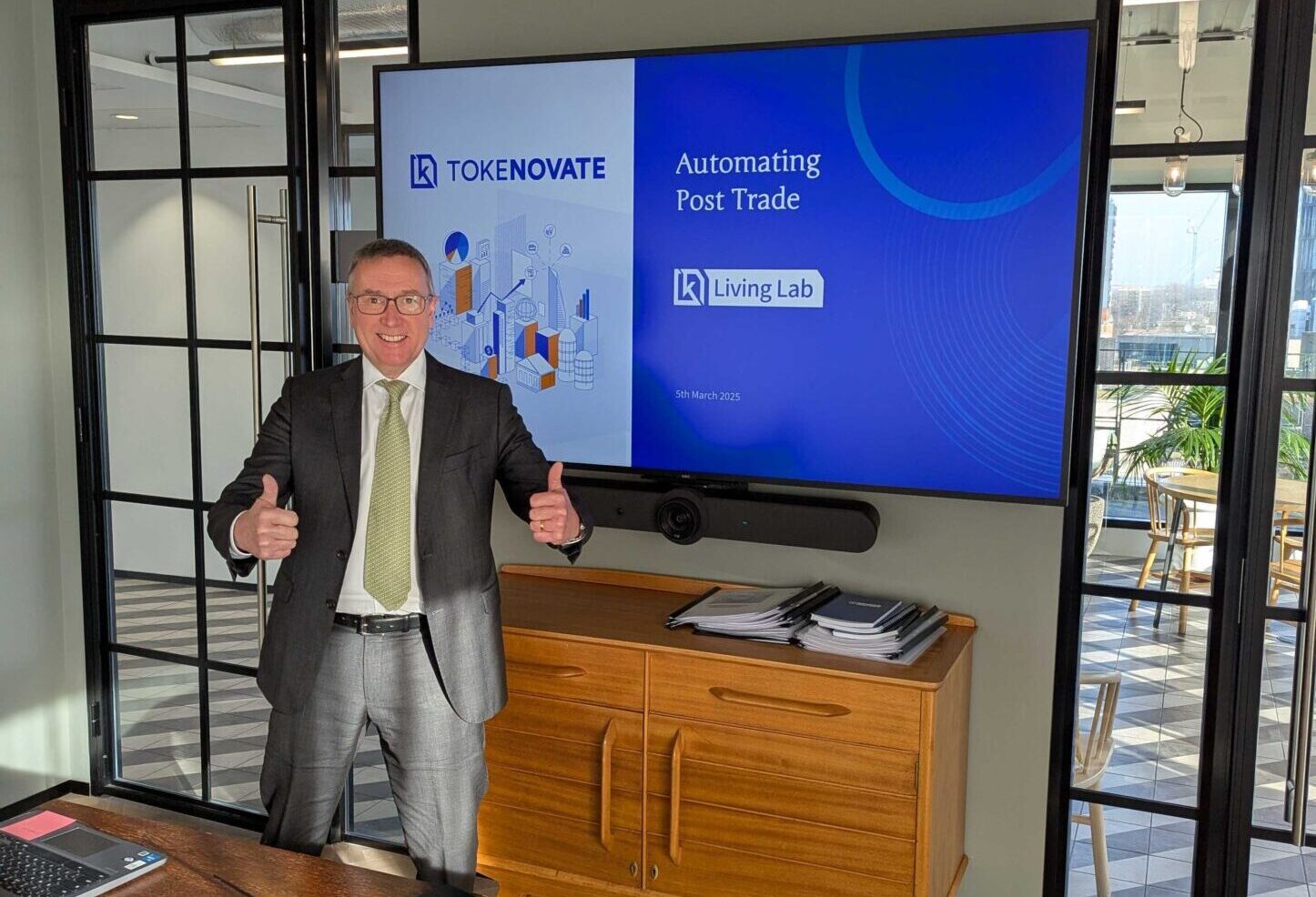This blog is the fourth and final entry in our series exploring how Tokenovate is operationalising the FINOS Common Domain Model (CDM). In this entry, Steve Haigh, Chief Technology Officer at Tokenovate, examines the technological implementation of CDM within our platform, explaining how CDM – through interoperability – can help deliver automation, transparency, and efficiency in post-trade processing.
Making CDM Operational
By Steve Haigh, Chief Technology Officer at Tokenovate.
If you spend as long as I have working in technology, you develop a healthy dose of scepticism toward words such as “interoperability.” Words like these tend to be tossed around as an easy fix-all to bigger systemic and strategic problems. They are synonymous with never-ending integration projects, red tape, frustrating barriers, and expensive workarounds, often leading to the kind of vendor lock-in that can undermine the very premise of “interoperability.”
Yet, true interoperability is crucial for genuine industry transformation. When implemented thoughtfully, it can provide the foundation for new business models and more user-centric innovations. In capital markets – where technology silos have long been the norm – adopting robust, well-defined interoperability standards can reduce unnecessary complexity and redundancy, unlocking substantial productivity and growth.
But achieving this level of collaboration is not easy. It requires shared vision and governance, along with buy-in from stakeholders who often have competing priorities. When these elements align, however, we begin to see compelling examples of interoperability done right.
The Power of CDM
For technology innovations in blockchain, smart contracts, tokenisation and AI to truly deliver on their promise, the underlying data must be standardised and interoperable:
- Blockchain requires standardised trade data for reliable execution and settlement.
- Smart contract automation depends on predictable, universally recognised structures to function predictably and efficiently.
- Tokenisation can only scale when assets are consistently defined across systems.
- AI relies on structured, high-quality data to drive intelligent decision-making and automation.
By establishing a uniform way to represent data, CDM provides a common language that the myriad of global systems and organisations within financial markets can agree upon. Markets and services can scale faster because they can plug into a ready-made technology ecosystem rather than starting from scratch. Data that were once buried in disconnected silos can emerge to reshape entire processes or business models. And the transformational benefits of these technologies can then be realised.
So, CDM isn’t just a technical artefact; it’s a prime example of how thoughtful and well-timed standardisation of data leads to interoperability that can energise an entire industry, turning a meaningless buzzword into a catalyst for digital transformation. That’s why we’ve chosen to embed CDM as one of the critical building blocks in our technology stack.
It’s the Data, stupid
As a software engineer, I see most problems as data problems. When I worked in healthcare, inefficiencies and administrative burdens were largely caused by data silos and the lack of interoperability between electronic health record systems, hindering patient care and medical outcomes. In cloud and IoT services, the challenge was integrating and securing vast, disparate data streams across multiple devices, platforms, and jurisdictions.
Similarly, the unsustainable costs and operational complexity in capital markets stem largely from the explosion of unstructured and siloed economic and legal data, particularly following the post-2009 global regulatory reforms. Rather than building yet another shiny new blockchain in search of a problem to solve, we’re addressing this data challenge head-on.
Our starting point is the Unified Trade Record – a standardised, shared digital object created using CDM that captures counterparty trade details, including economic terms, legal agreements, and key lifecycle events, as highlighted by my colleague Ciarán in our previous blog.
Crucially, these data are recorded and modelled using a CDM-based, structured, machine-readable format, ensuring consistency and interoperability (that word again…) across derivative and SFT workflows. When data speaks the same language, complex processes become easier to orchestrate and scale – whether in healthcare, IoT, or indeed capital markets.
Scaling CDM from Concept to Operationalisation
One of the biggest hurdles in CDM adoption has been the challenge of integrating it with existing financial market infrastructure. Many firms acknowledge the benefits of standardisation but struggle to implement it in a way that aligns with their existing workflows.
We are solving that problem by delivering a technology stack that absorbs this pre-existing complexity, ensuring that institutions can integrate CDM without having to rebuild their entire ecosystem.
By offering a rich API layer and a modular trade workflow framework, we enable firms to adopt CDM incrementally, bringing in standardisation exactly where it offers the most immediate value. This pragmatic approach ensures that institutions can modernise their operations without disrupting their existing business processes.
The future of financial markets
Capital markets are undoubtedly moving toward a digitally native market structure. Tokenovate is committed to leading this transformation. For us, CDM is not just another theoretical standard; we’re making it an operational reality. As we scale our platform, we’re focused on broadening adoption across asset classes, embedding contractual and regulatory requirements, enhancing automation to reduce risk and inefficiency and optimising capital through increased asset mobility.
And so, as you have seen across this series of blog posts, financial markets are at an inflection point. Tokenisation, automation, AI and real-time settlement are no longer distant concepts – they are happening now. Firms that embrace this evolution will define the next generation of financial market infrastructure. At Tokenovate, we’re not just talking about it.
We’re building it.
Read the other posts in the Operationalising CDM series here and here and here.
Subscribe to our YouTube channel for demo videos of our platform and progress. Or sign-up to receive news straight to your inbox at the bottom of this page.


